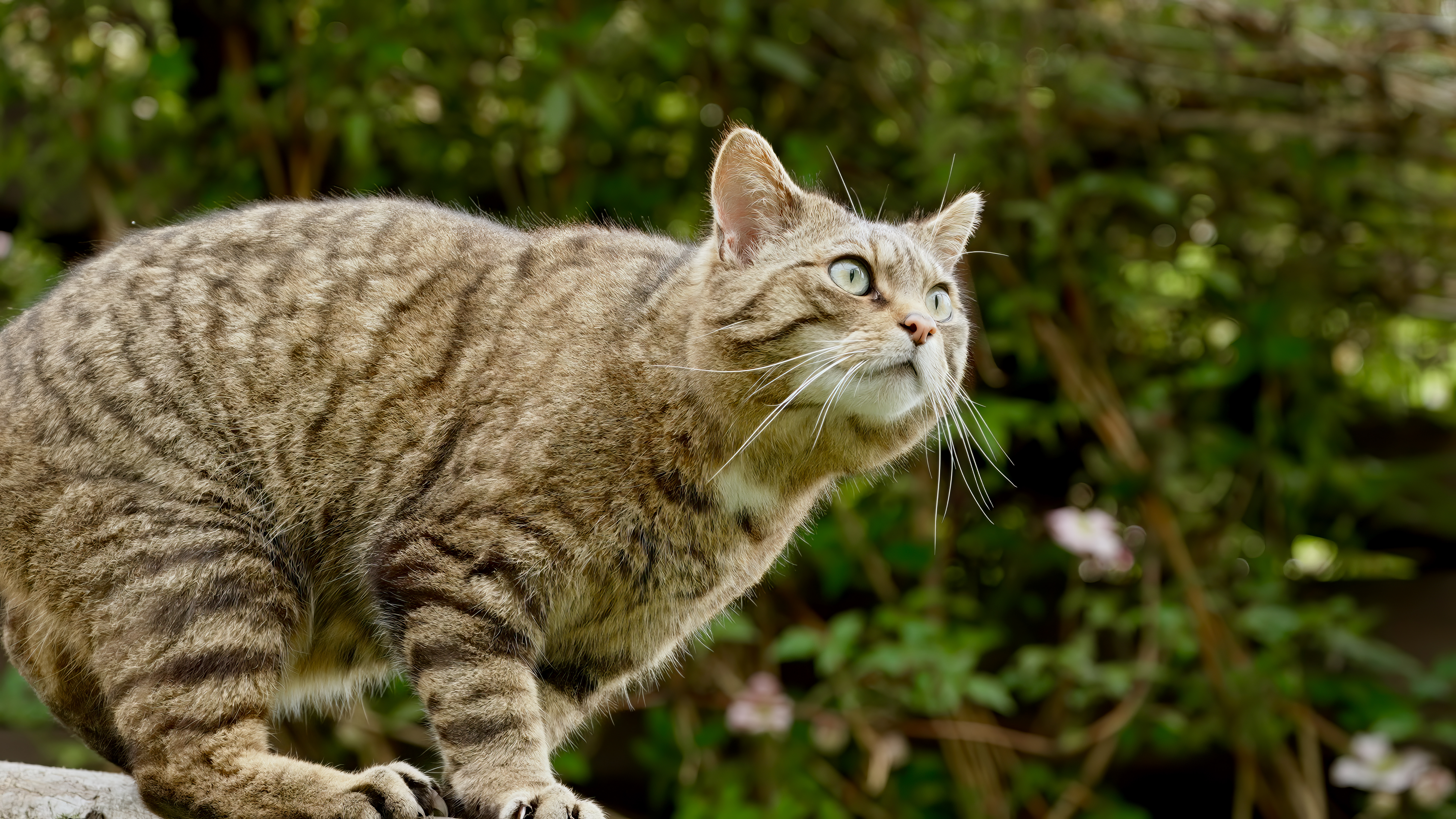What has happened since the ‘Wildcats: Cait ann an Cunnart’ documentary?
The ‘Wildcats: Cait ann an Cunnart’ documentary broadcast on BBC Alba on Wednesday 8 Jan 2025 provides a behind the scenes look into the extensive work required to release wildcats into the Cairngorms National Park for the first time. Viewers of the series will see the painstaking efforts taken by the Saving Wildcats team to prepare wildcats for the challenges of life in the wild and the complexities associated with releasing one of Britain’s most endangered species into a landscape shared with a diverse community of people.
While the releases that occurred in 2023 marked a significant milestone towards restoring the species to Scotland, a lot has occurred since. As the series was filmed between June 2022 and May 2024, we thought it would be a good idea to give viewers a few updates on some key events that have occurred since.
Releases and monitoring
To date we have released 28 wildcats into the landscape. So far there have been three confirmed mortalities from released adult cats, including two from the cohort of wildcats released last summer.
Now that wildcat population is growing in the wild, the Saving Wildcats field team are spending a lot of time tracking the released cats, using the GPS-radio collars that they are fitted with prior to release. As the batteries in the collars only last for a limited period of time, some collars have been replaced and some wildcats are now without collars after having had them removed . The field team also use camera traps to monitor the growing population.
2024 also saw wildcat kittens born in the wild to some of the released female wildcats that the second half of the documentary follows the releases of, marking another step towards saving the Highland tiger. So far, the team believe at least 24 kittens have been born and monitoring of this vital first generation of wild-born animals is ongoing.
Trap, Neuter, Vaccinate, Return (TNVR) programme
Although only briefly covered in the documentary, a significant amount of work has been put into preventing the threat of interbreeding (hybridisation) between feral domestic cats (Felis catus) and wildcats (Felis silvestris). Although feral domestic cats and wildcats are different species, they can interbreed and produce viable and fertile offspring, leading to the genetic extinction of the wildcat. To mitigate against this risk, Saving Wildcats has a Trap, Neuter, Vaccinate, Return (TNVR) programme and continues to neuter and vaccinate identified feral domestic cats.
Working with local communities and land mangers
Saving Wildcats is as much about people as it is about wildcats, and since the project’s inception the team have been working with local communities to ensure a fair coexistence between wildcats and people. To date, Saving Wildcats has spoken with 67 individual landowners and managers and has organised over 80 talks with the community in the local area.
Whilst there is plenty of evidence that the wildcats hunt a wide range of prey in the wild, since the releases began there have also been several confirmed instances of released wildcats eating chickens, to the understandable dismay of affected owners. To support residents directly affected, Saving Wildcats has been trialling the loan of a predator-proof coop and run which should help to protect domestic poultry from wildcats and other predators that are part of the natural landscape.
Some of the released wildcats have set up territories on game estates, neighbouring the release area, where the habitat is good for wildcats and there is a range of prey. Traditional sporting (including pheasant and partridge shooting) is an important part of local community life. Unfortunately, there have been several incidents of wildcats entering pheasant pens, as well as predation of game birds. Saving Wildcats has been working with government agency NatureScot and those affected to discuss how this can be managed going forward. We are grateful for the collaboration with local estates and gamekeepers throughout this project and these challenges.
Progress has also been made on trailing responsible tourism opportunities, with Saving Wildcats recently teaming up with Speyside Wildlife—a small company specialising in wildlife tours—to explore the potential for eco- tourism to benefit local communities. As ever, wildcats can also be seen at the Royal Zoological Society of Scotland’s Highland Wildlife Park.
And of course, at the partnership’s off-show conservation breeding for release centre at Highland Wildlife Park (in a quiet location away from visitors), the team continue to prepare the next generation of wildcats for life in the wild.
The return of wildcats to Scotland is a long-term endeavour involving collaboration by a huge number of people. We are incredibly grateful for all the support that Saving Wildcats has received. If you are inspired by the journey of wildcats into the wild, you can get involved and help by sponsoring a wildcat.
Although the first releases and wild births are a huge milestone in recovery, there is still a significant amount of progress to be made. Please continue to follow us for updates on Scotland’s wildcats.

